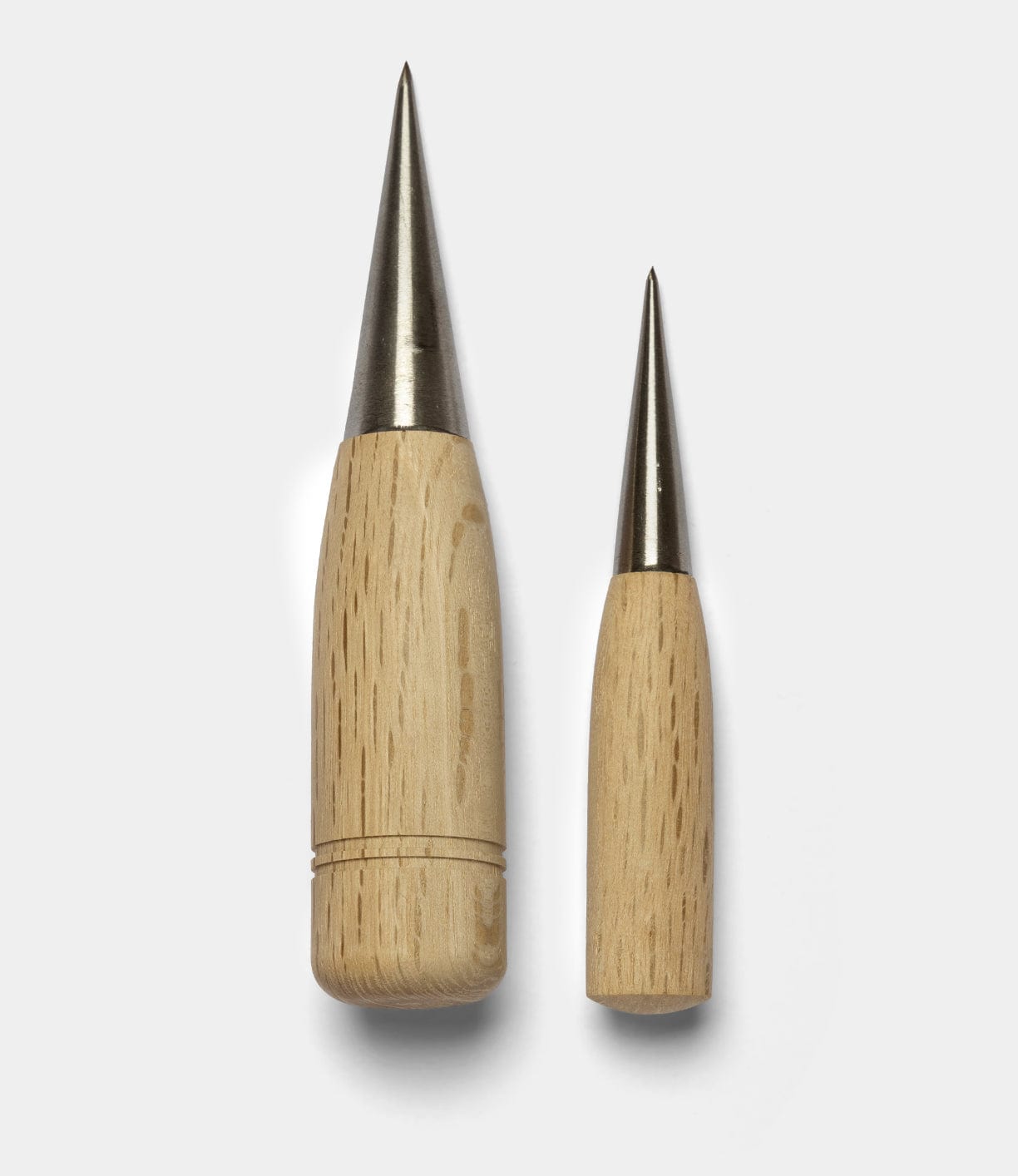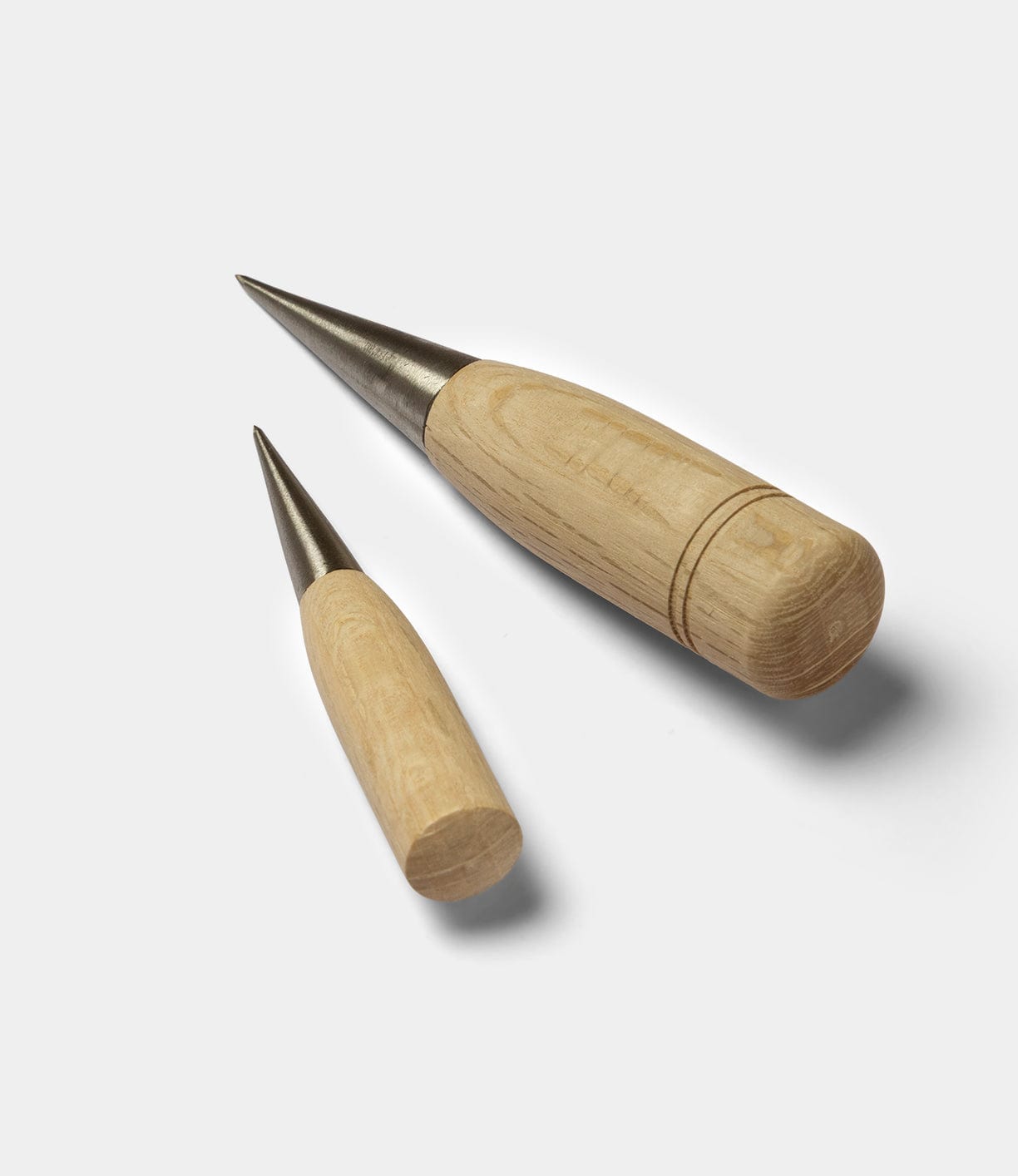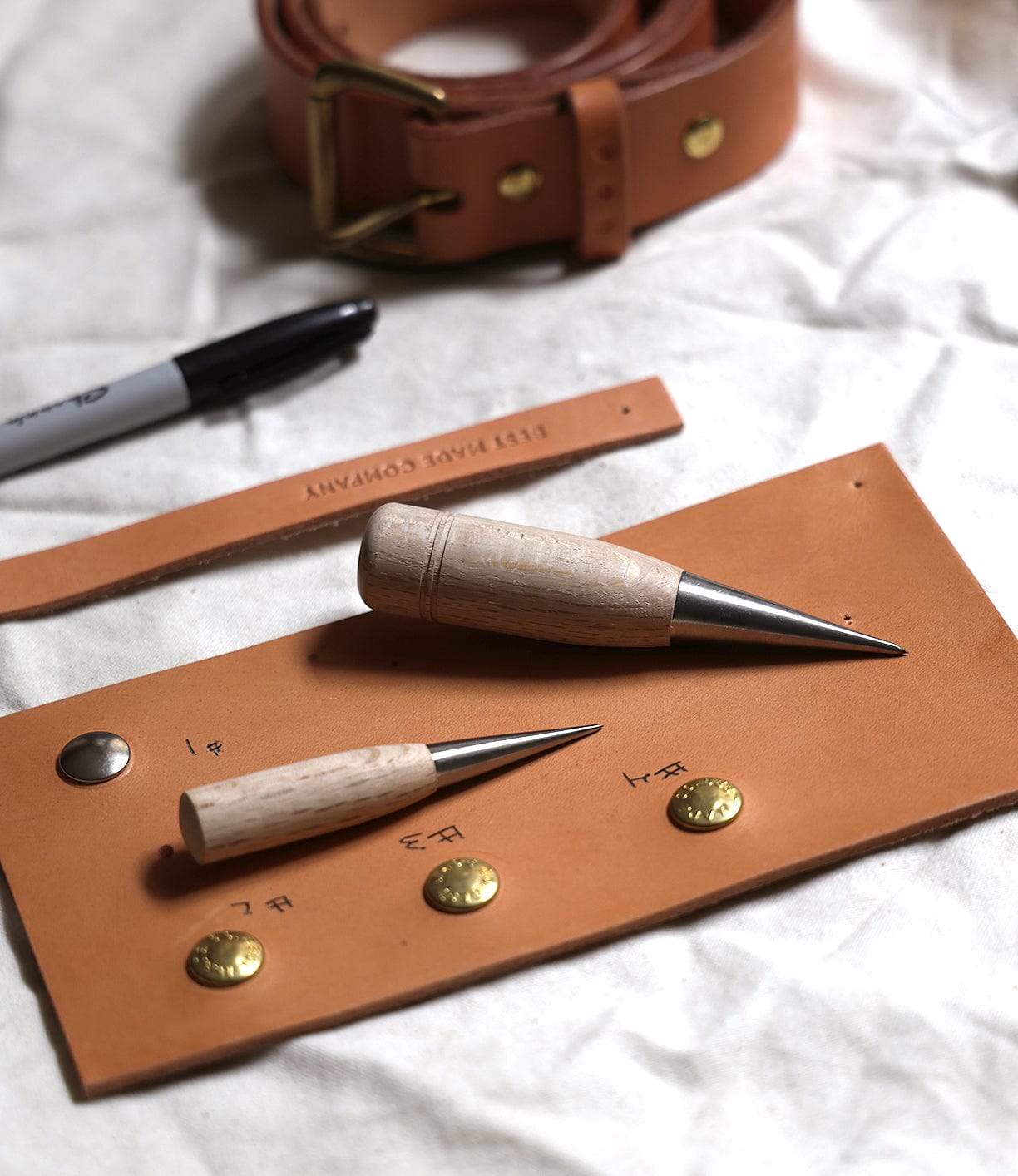


16 Uses for an Awl:
1. Punching holes in leather - Creating precise holes for stitching in leatherwork and bookbinding
2. Starting screw holes in wood - Making pilot holes to prevent wood from splitting when inserting screws
3. Marking precise points - Scribing exact locations on materials for drilling or cutting
4. Enlarging existing holes - Gradually increasing hole diameter in various materials
5. Creating drainage holes - Punching small holes in plant pots or containers
6. Jewelry making - Opening jump rings and creating holes in metal findings
7. Fabric work - Making buttonholes or eyelets in heavy fabrics
8. Sailmaking and canvas repair - Punching holes for grommets and stitching heavy marine fabrics
9. Upholstery work - Creating holes for tufting buttons and decorative elements
10. Clay and pottery work - Creating decorative holes and patterns in clay pieces
11. Shoe repair - Punching holes for new laces or repair stitching
12. Paper crafts - Creating precise holes in cardstock for binding or decoration
13. Tent and tarp repair - Making holes for patches or reinforcement grommets
14. Electrical work - Creating small holes in rubber gaskets or plastic housings
15. Model making - Drilling tiny holes in plastic or wood model components
16. Belt making - Punching new holes in leather belts for better fit
1. Punching holes in leather - Creating precise holes for stitching in leatherwork and bookbinding
2. Starting screw holes in wood - Making pilot holes to prevent wood from splitting when inserting screws
3. Marking precise points - Scribing exact locations on materials for drilling or cutting
4. Enlarging existing holes - Gradually increasing hole diameter in various materials
5. Creating drainage holes - Punching small holes in plant pots or containers
6. Jewelry making - Opening jump rings and creating holes in metal findings
7. Fabric work - Making buttonholes or eyelets in heavy fabrics
8. Sailmaking and canvas repair - Punching holes for grommets and stitching heavy marine fabrics
9. Upholstery work - Creating holes for tufting buttons and decorative elements
10. Clay and pottery work - Creating decorative holes and patterns in clay pieces
11. Shoe repair - Punching holes for new laces or repair stitching
12. Paper crafts - Creating precise holes in cardstock for binding or decoration
13. Tent and tarp repair - Making holes for patches or reinforcement grommets
14. Electrical work - Creating small holes in rubber gaskets or plastic housings
15. Model making - Drilling tiny holes in plastic or wood model components
16. Belt making - Punching new holes in leather belts for better fit
Large Awl: 4.5" long x 0.875" wide
Small Awl: 3.5" long x 0.625" wide
Small Awl: 3.5" long x 0.625" wide
Everyday use: Keep awls dry and clean after each use. Wipe the points and handles with a soft cloth to remove debris and moisture. Store in a dry place to prevent rust. Oil the metal points lightly with machine oil or 3-in-1 oil every few months. Apply a thin film and wipe excess away. This prevents corrosion and maintains smooth operation. Protect the sharp points during storage. Use point guards or stick them into a cork. Never store loose in a drawer where points can dull against other tools. Handle with care. These tools are extremely sharp. Always point away from your body when working. Store out of reach of children.
Sharpening: Sharpen only when necessary. Use a fine sharpening stone at the original angle. Work slowly and maintain the taper. Over-sharpening weakens the point.
Cleaning: Clean stubborn residue with mineral spirits on a cloth. Avoid harsh chemicals that may damage the handle finish.
With proper care, these awls will serve you for decades.
Sharpening: Sharpen only when necessary. Use a fine sharpening stone at the original angle. Work slowly and maintain the taper. Over-sharpening weakens the point.
Cleaning: Clean stubborn residue with mineral spirits on a cloth. Avoid harsh chemicals that may damage the handle finish.
With proper care, these awls will serve you for decades.
Made in Japan


